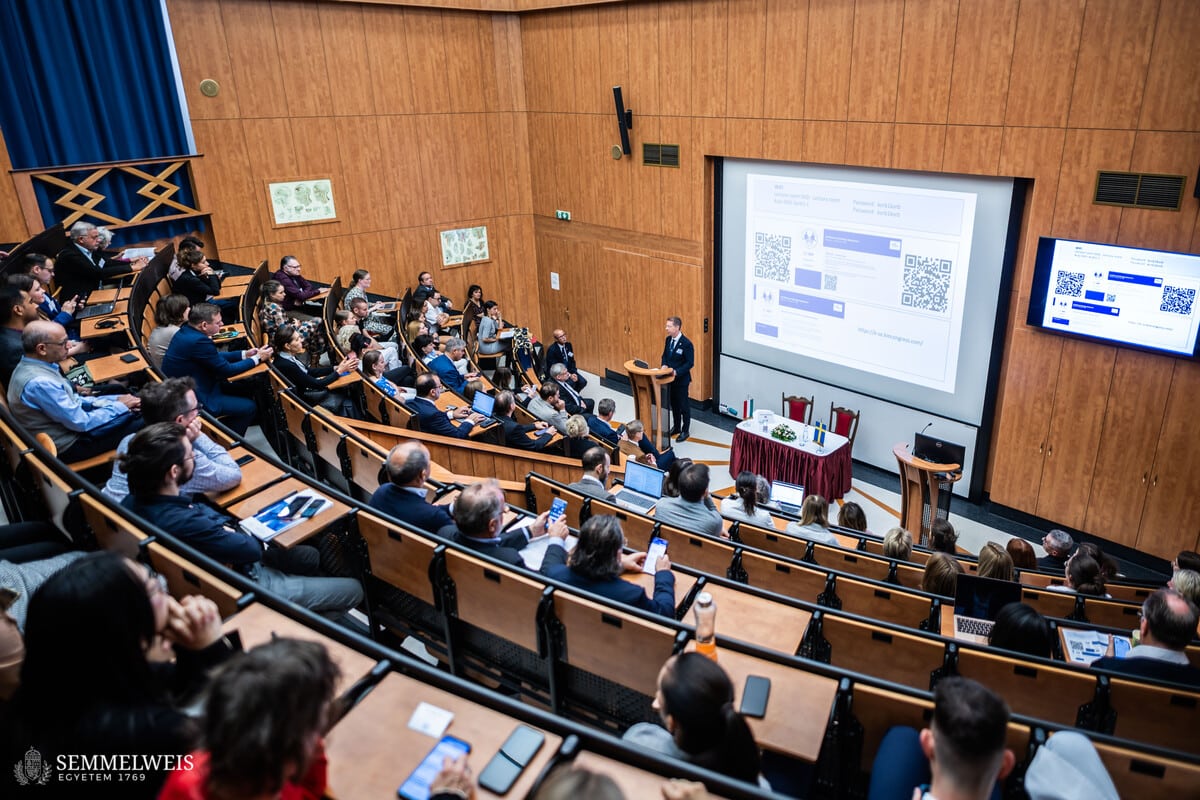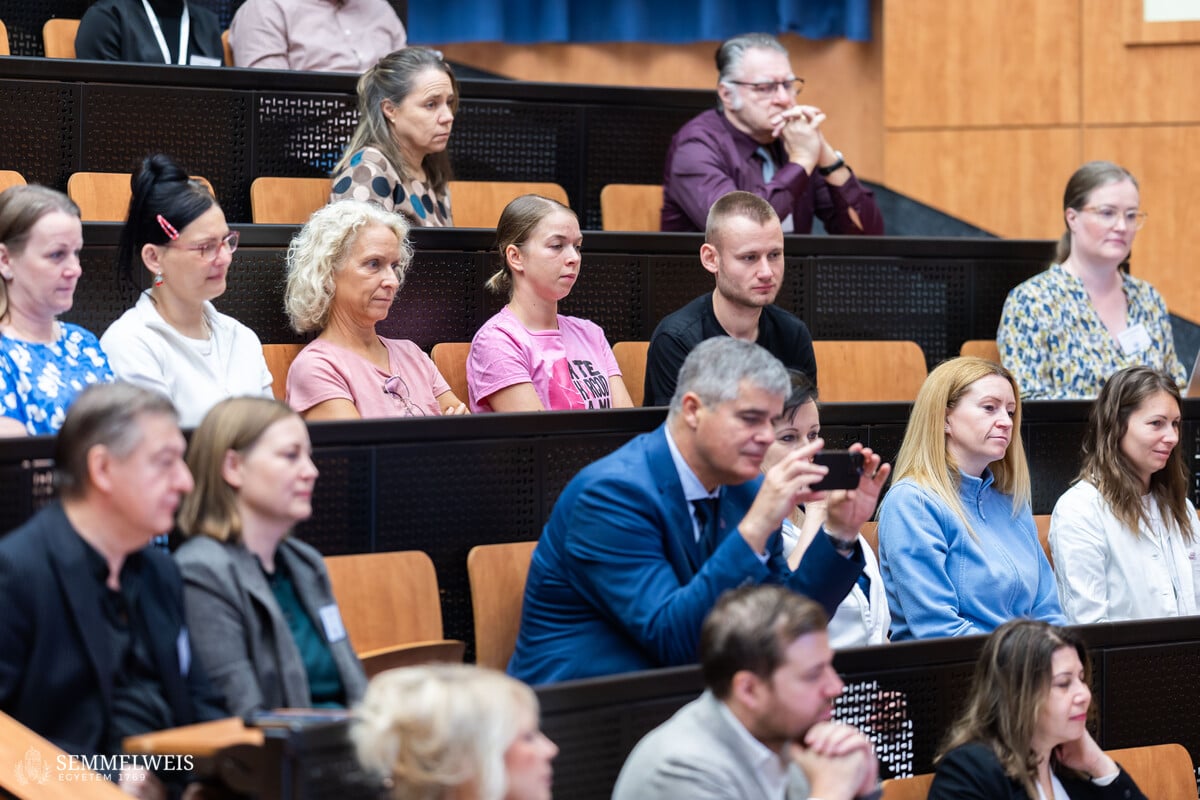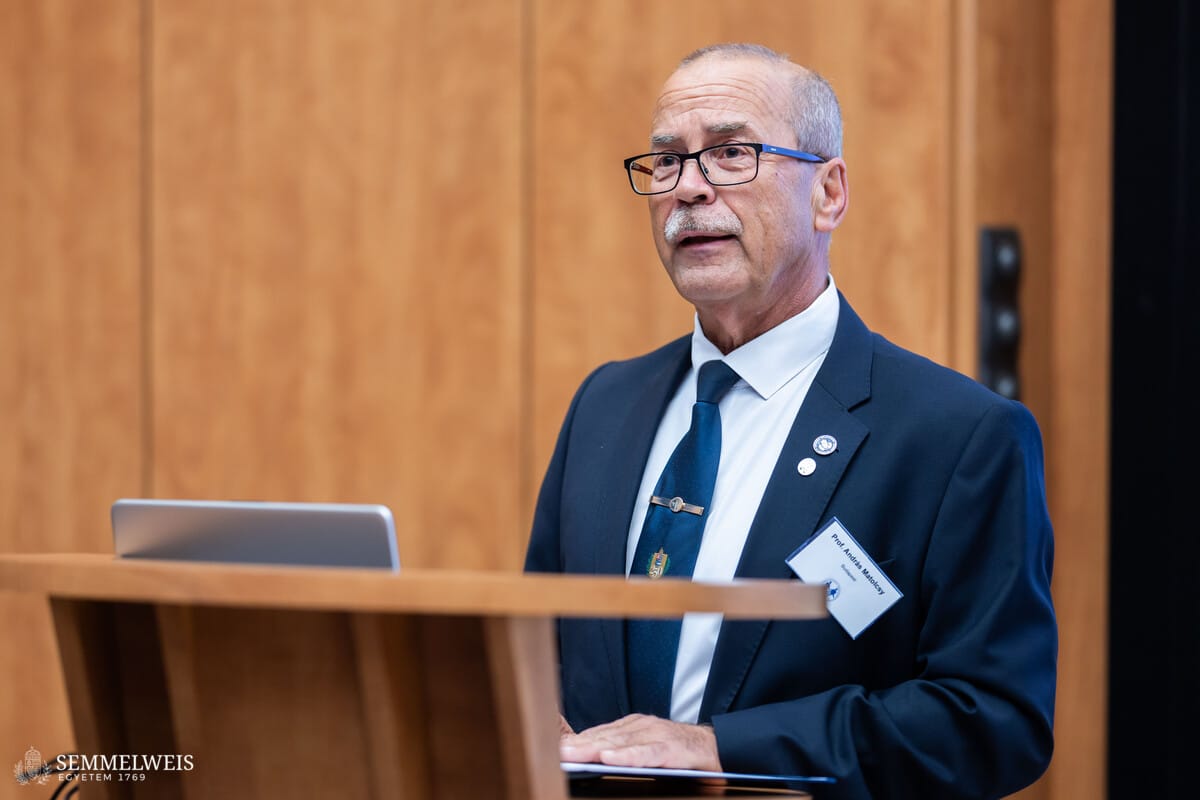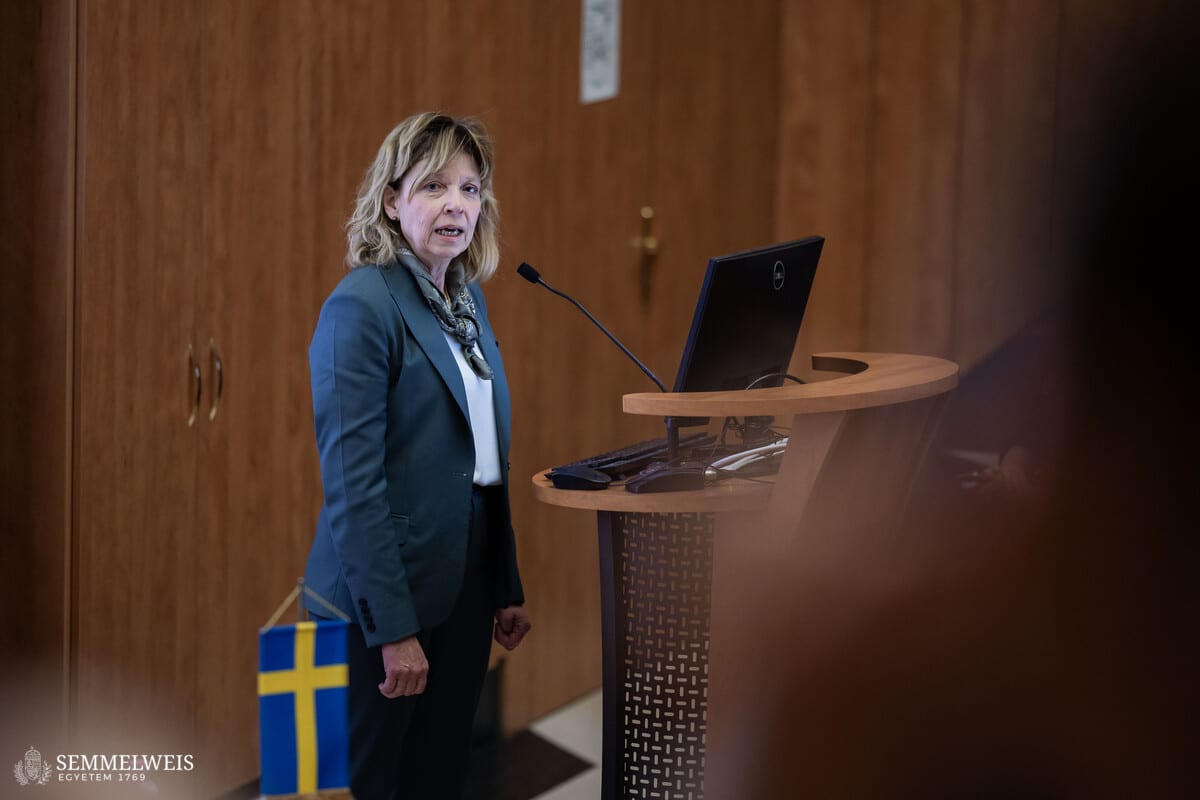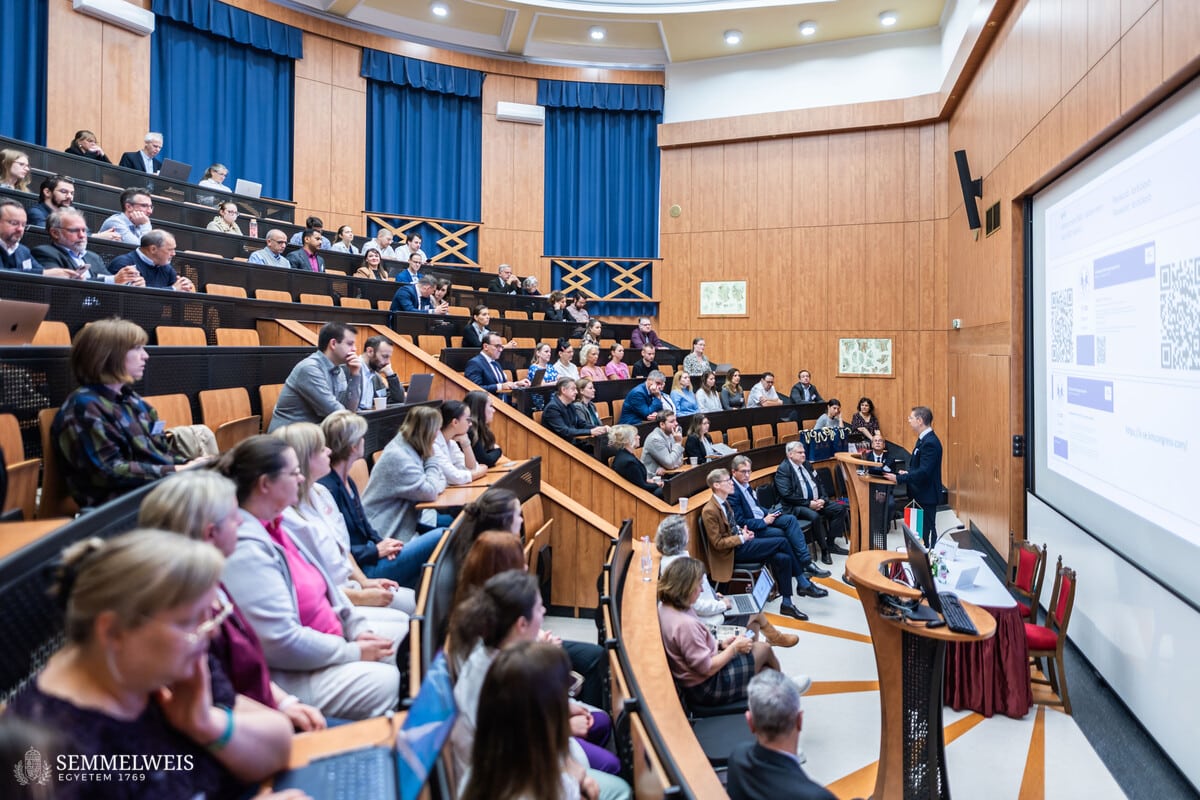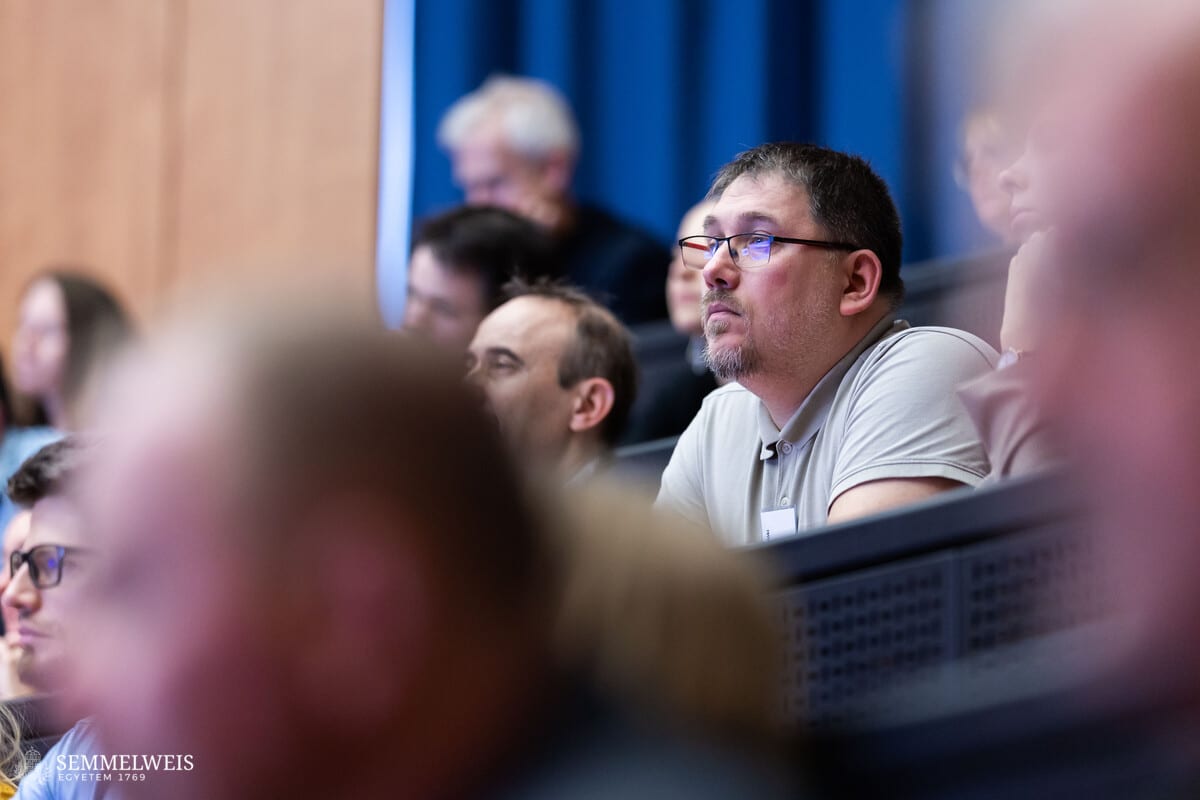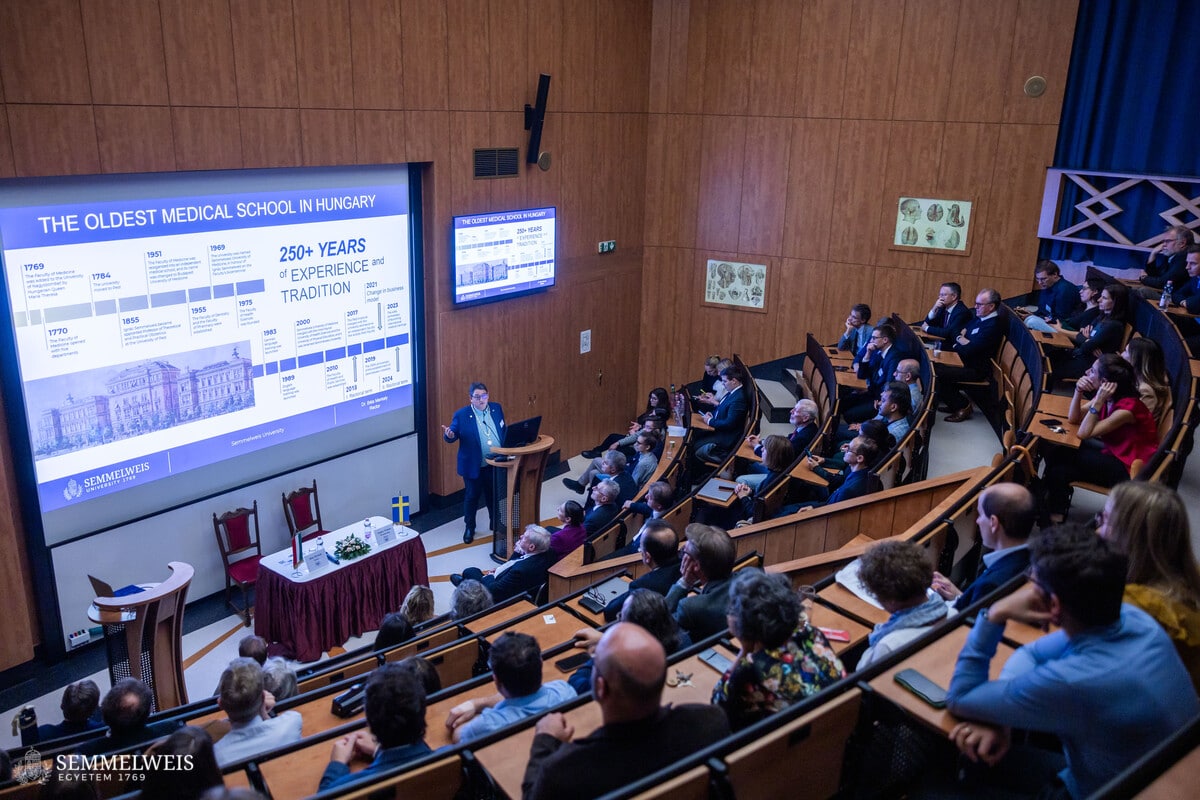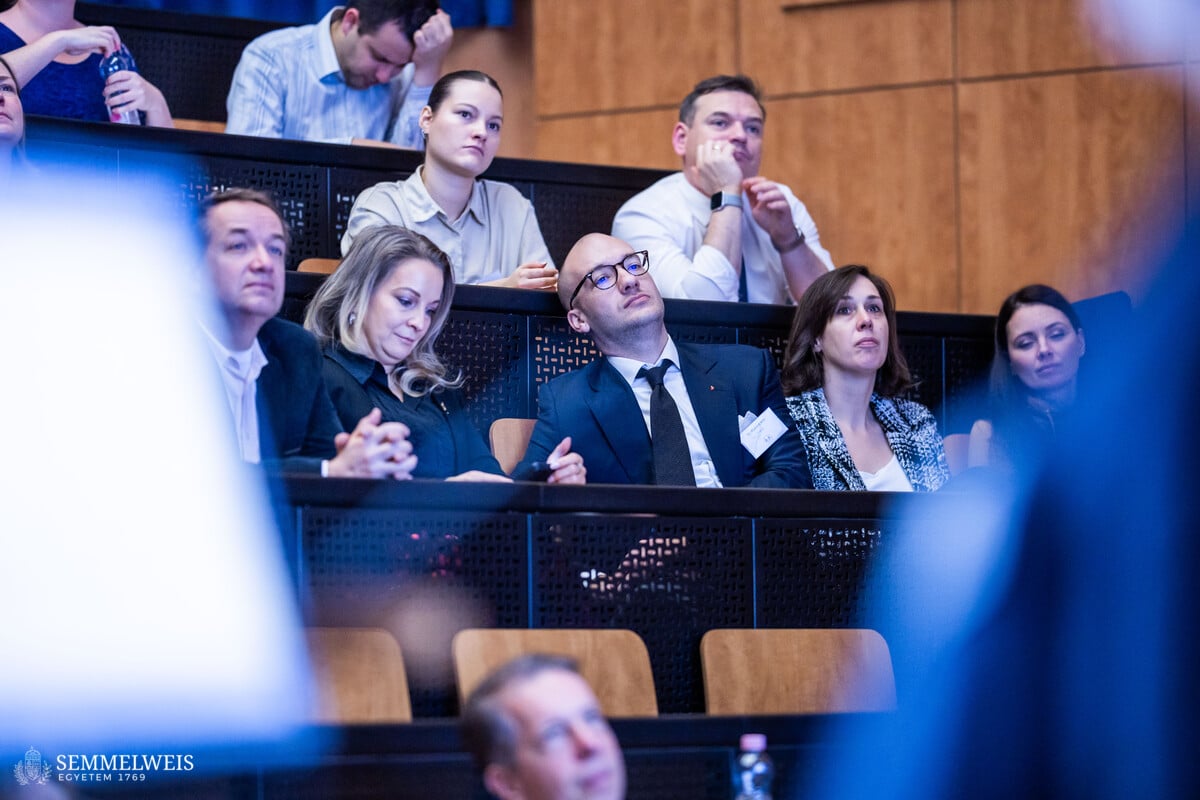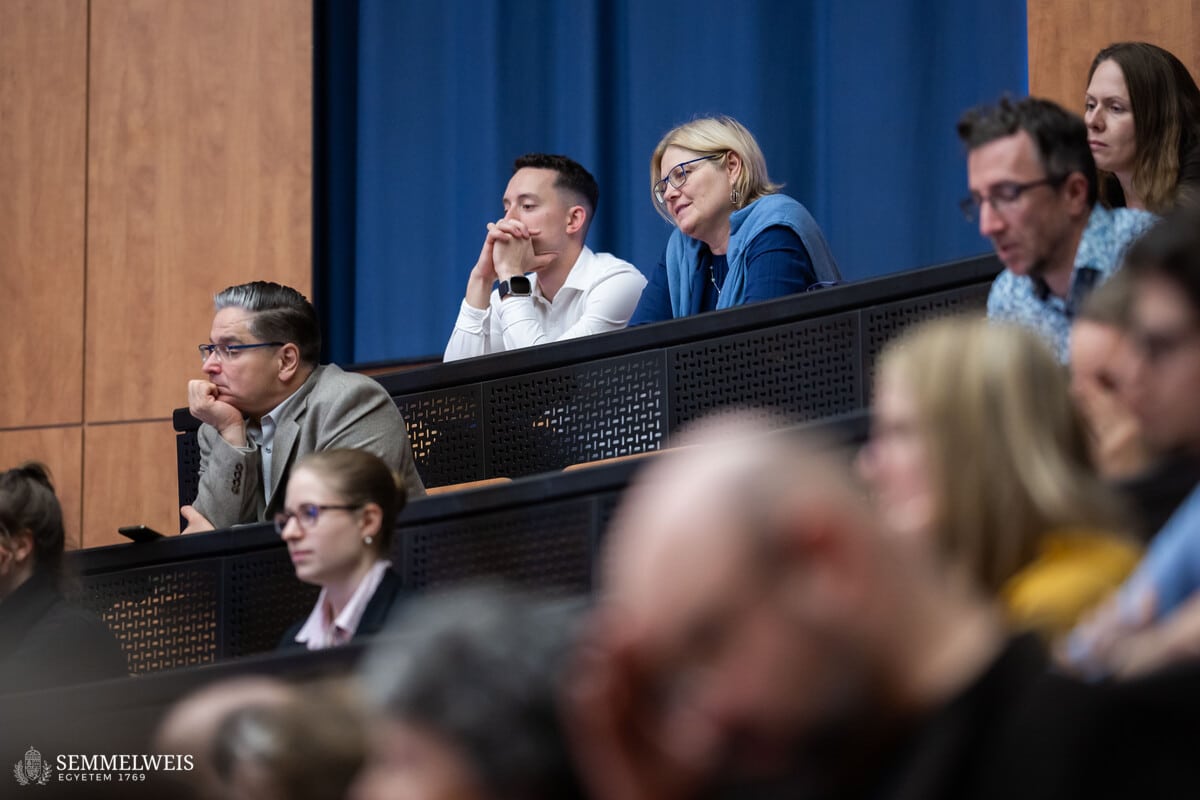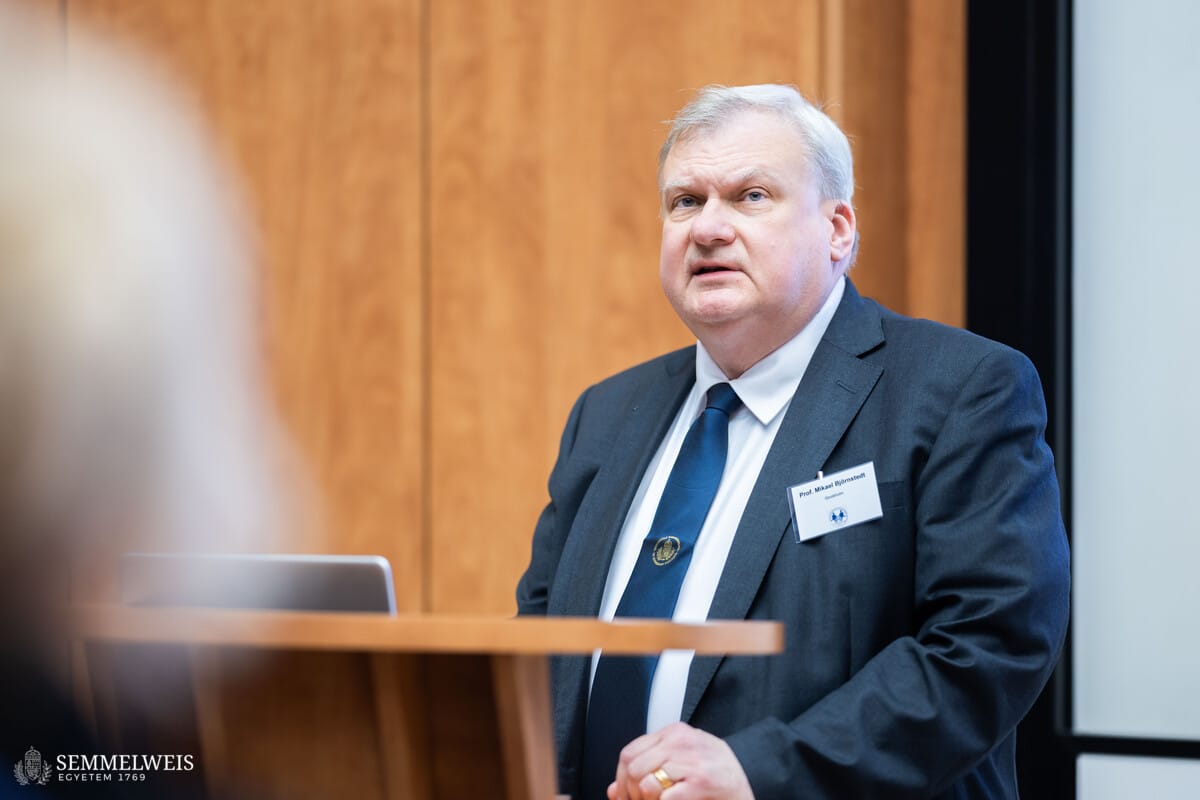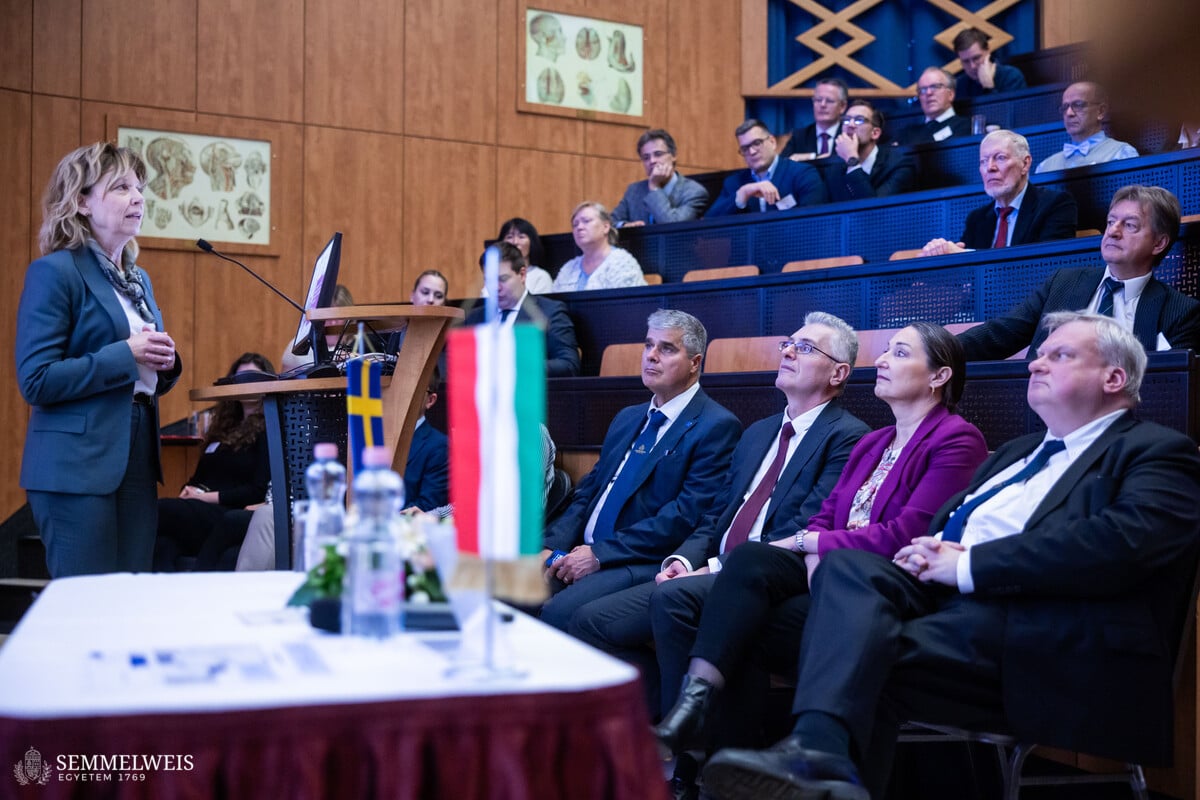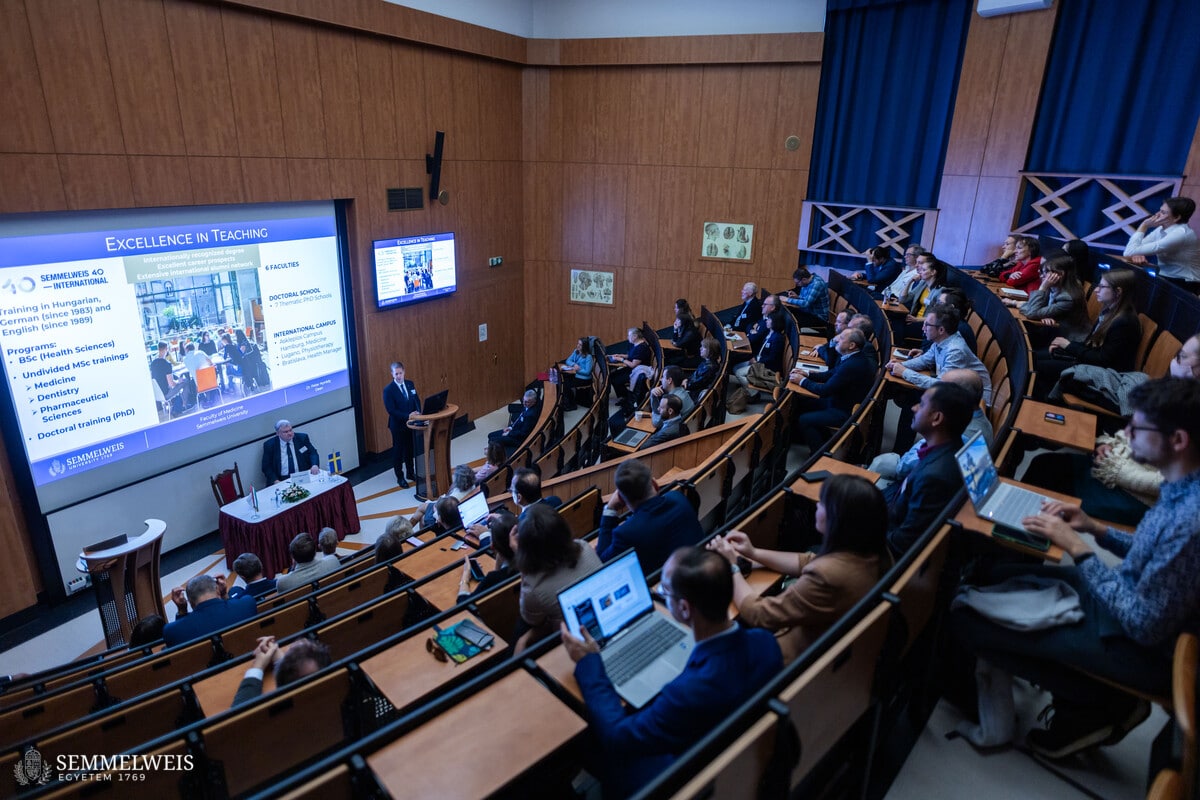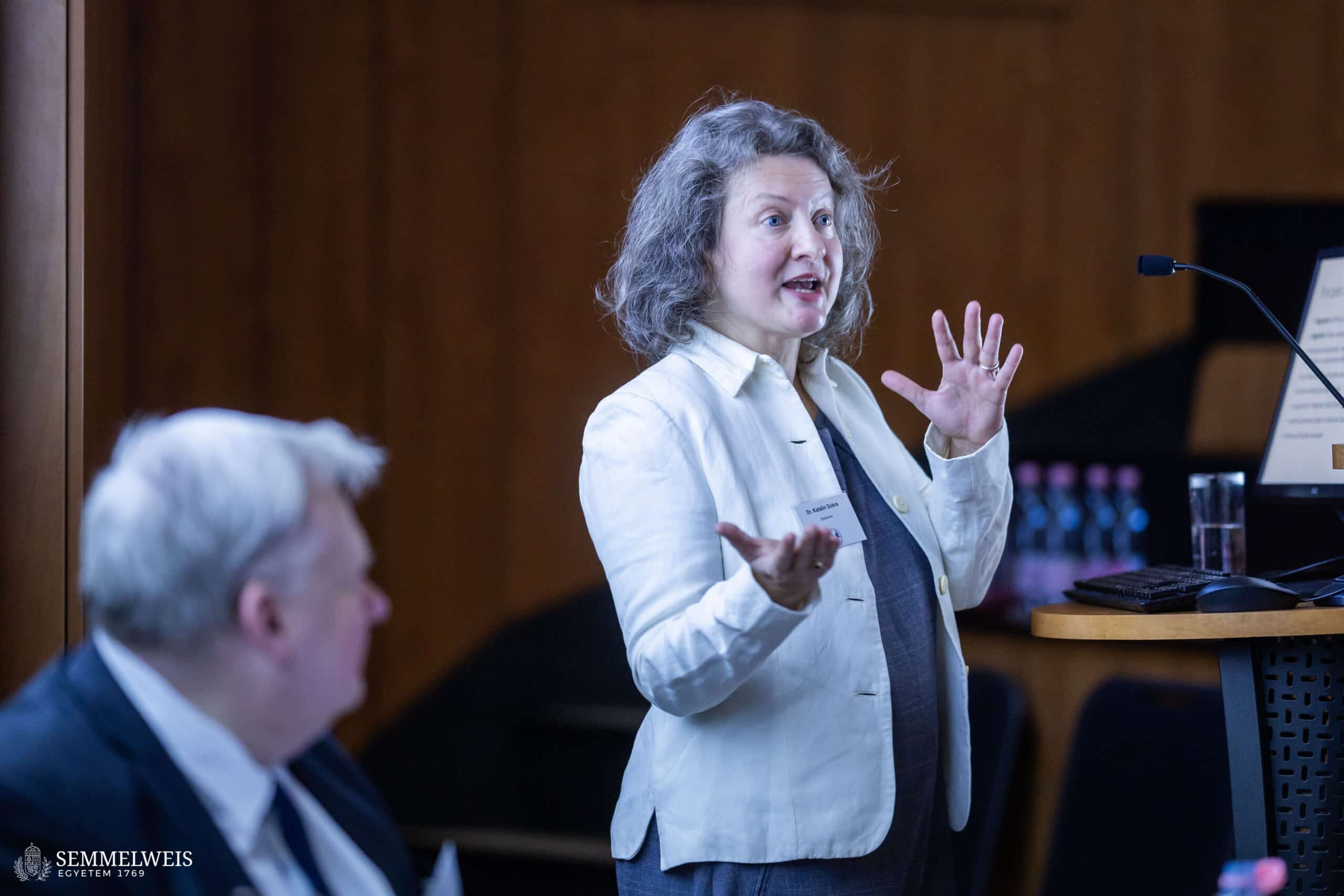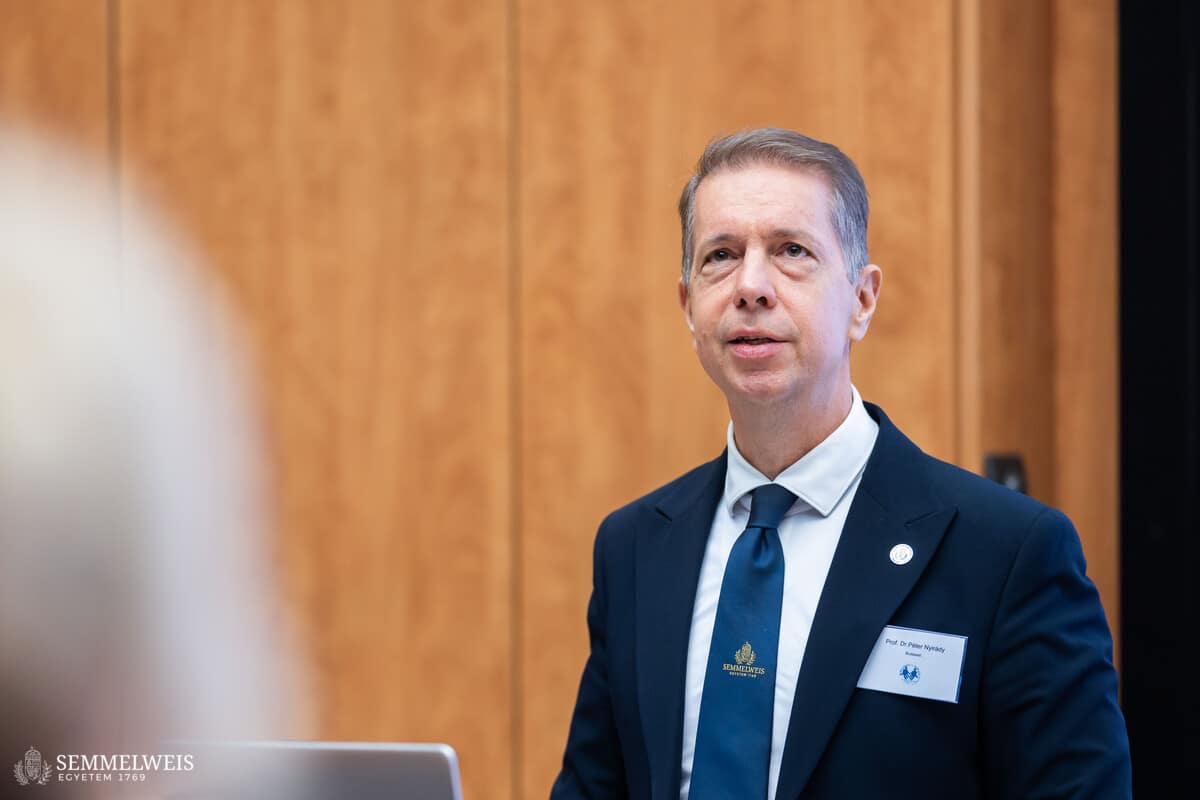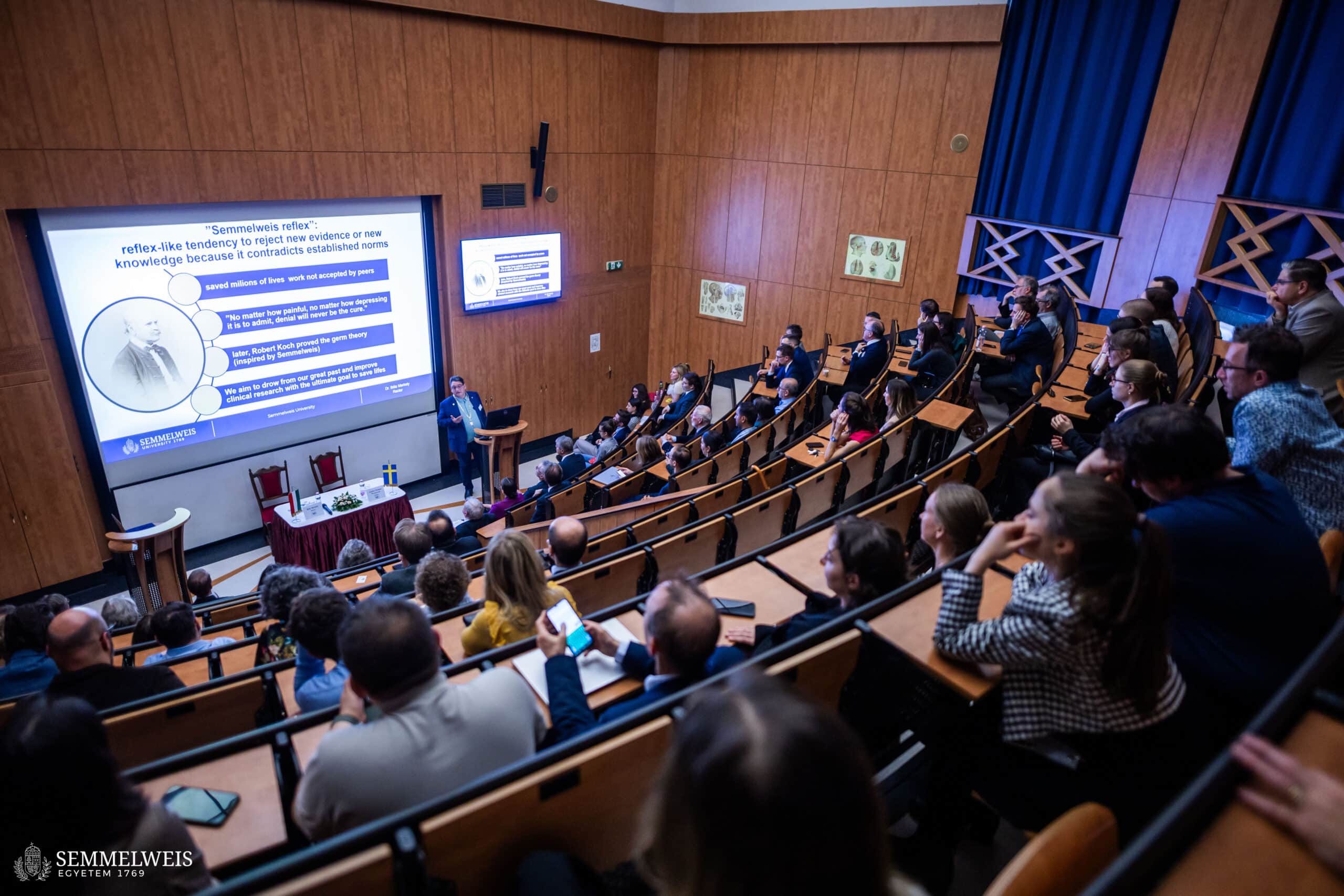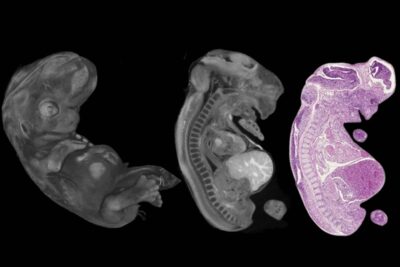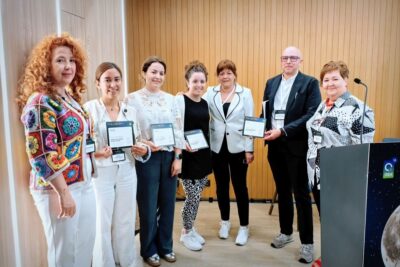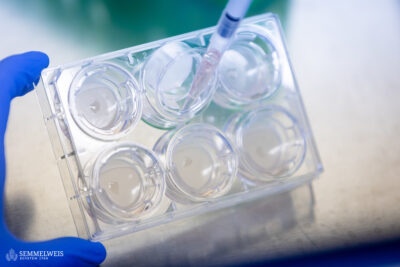The two-day event was opened by Dr. András Matolcsy, Director of the Department of Pathology and Experimental Cancer Research, who expressed his hope that the current meeting would further strengthen cooperation between the Karolinska Institute and Semmelweis University.
Dr. Péter Nyirády, Dean of the Faculty of Medicine (ÁOK), pointed out that the Karolinska Institute was ranked 53rd by Times Higher Education, and Karolinska University Hospital was listed as the best hospital in Europe and 5th best in the world according to Newsweek World’s Best Hospitals. “These results clearly demonstrate Karolinska’s excellence, which is why we strive for the most fruitful cooperation possible with the Swedish institution,” he said. He emphasized that Semmelweis University and its Department of Pathology and Experimental Cancer Research were global leaders in the fields of digitization and education. Digital histology education was introduced in 2007 and extended to postgraduate training in 2024. From 2025, fully digital diagnostics are used. As the dean emphasized, the department was also the country’s largest molecular oncology diagnostic center, whose unique laboratory IT system was applied in numerous pathology wards nationwide. “Cooperation is also crucial because real results in the field of medicine and health sciences can only be achieved through international knowledge sharing and cooperation today. In this regard, the relationship between the two institutions is exemplary, and we hope that it will continue to bring many joint successes in the future,” Dr. Péter Nyirády noted.
Dr. Mikael Björnstedt, Professor of Pathology at the Karolinska Institute and an honorary doctor of Semmelweis University, spoke appreciatively about the intensive scientific and educational ties between the two institutions, the results of which had also benefited the Swedish pathology clinic. “I consider Semmelweis University my second home, and I am convinced that we will be able to expand our cooperation in new ways,” he said.
At this year’s meeting, the Karolinska Institute was represented by President Annika Östman Wernerson and 40 pathologists, including 12 professors.
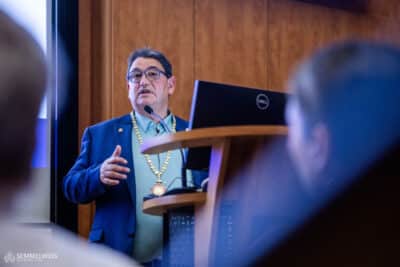 The conference featured presentations by the rectors of the two universities, who gave detailed descriptions of their institutions. In his talk, Dr. Béla Merkely provided an overview of the history of Semmelweis University, the discovery made by its namesake, the institution’s achievements in international rankings, and its threefold mission, touching on the relationship between doctoral education and scientific output. He presented the institution’s innovation efforts, the National Center for Medical Education and Innovation (NOIKK), the education provided by the faculties, including the Pető Method, and the university’s international network. Finally, he highlighted the fruits of the professional cooperation between the two institutions.
The conference featured presentations by the rectors of the two universities, who gave detailed descriptions of their institutions. In his talk, Dr. Béla Merkely provided an overview of the history of Semmelweis University, the discovery made by its namesake, the institution’s achievements in international rankings, and its threefold mission, touching on the relationship between doctoral education and scientific output. He presented the institution’s innovation efforts, the National Center for Medical Education and Innovation (NOIKK), the education provided by the faculties, including the Pető Method, and the university’s international network. Finally, he highlighted the fruits of the professional cooperation between the two institutions.
The symposium sections offered 53 scientific presentations, which covered topics ranging from education, female and perinatal pathology, oncology, oncoimmunology and hematology, gastrointestinal pathology, and diagnostic pathology to renal and uroepithelial pathology.
Representing Semmelweis University, Dean Dr. Péter Nyirády summarized the characteristics of the curricular reform. During the keynote presentations, Dr. Richard Rosenquist Brandell introduced the Swedish molecular diagnostics network system, while Dr. Csaba Bödör, Professor at the Department of Pathology and Experimental Cancer Research, presented the molecular diagnostics developments at Semmelweis University. During the two-day conference, talks were given by Dr. András Matolcsy, Director of the Department of Pathology and Experimental Cancer Research; Research Professor Dr. Anna Sebestyén; Associate Professor Dr. Botond Tímár; Assistant Professor Dr. András Rókus;, Clinical Specialists Dr. Alex Jenei, Dr. Richárd Kiss, Dr. Ildikó Krencz, and Dr. Kata Júlia Pálos; Research Associate Dr. Dorottya Moldvai; doctoral students Dr. Péter Szőke and Dr. Viktória Varga; and Dr. Tamás László, resident. On behalf of the Department of Pathology, Forensic and Insurance Medicine Director Dr. András Kiss; Professor Emeritus Dr. József Tímár; Professor Dr. Gábor Lotz; Assistant Professors Dr. Deján Dobi and Dr. István Kenessey; Dr. Krisztina Danics, Specialist and Head of the Prion Reference Center; Clinical Specialist Dr. Bálint András Deák; and Bioengineer Dr. Endre Kontsek presented their research findings.
Judit Szabados-Dőtsch
Photos by Bálint Barta – Semmelweis University

